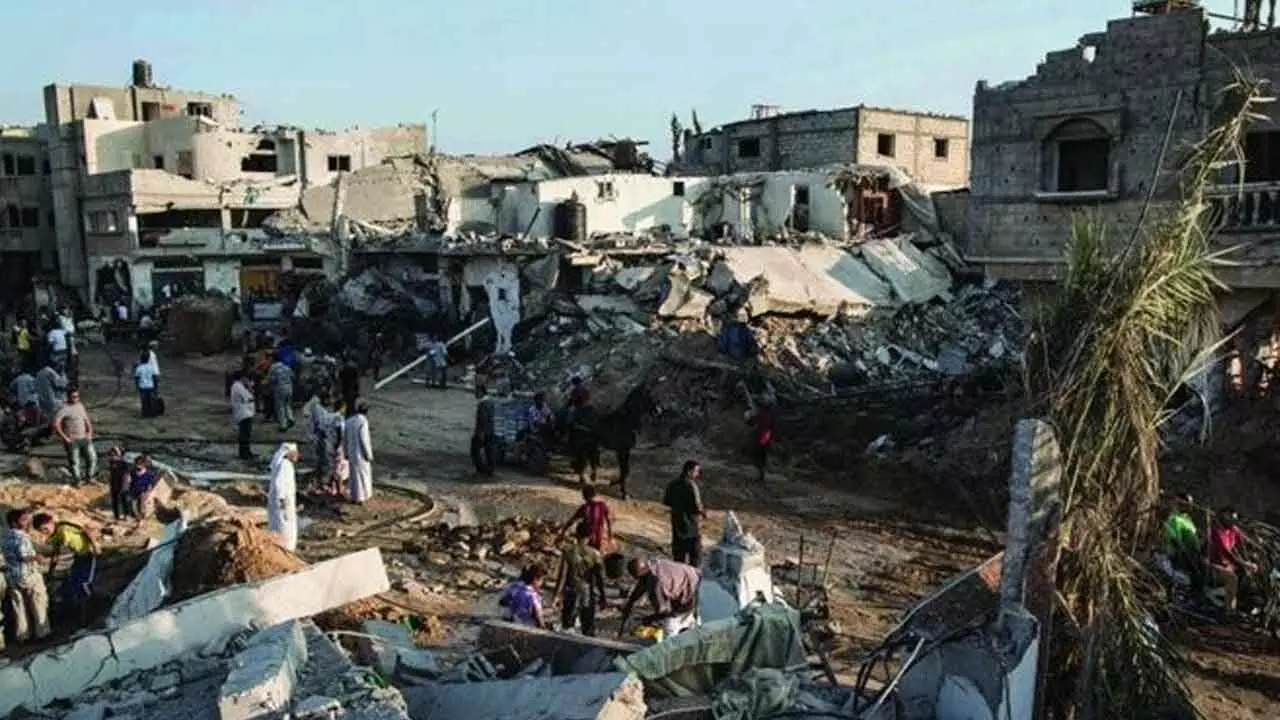How Wars Perpetuate A Vicious Cycle Of Poverty And Instability
From historical empires to modern-day conflicts, warfare has disrupted trade, destroyed infrastructure, and displaced millions
How Wars Perpetuate A Vicious Cycle Of Poverty And Instability

The estimation of economic costs associated with violent conflicts presents significant challenges due to the complexities involved in measuring economic activity within conflict zones. The disruptive nature of war results in both direct and indirect effects on economic structures, extending well beyond the immediate duration of hostilities.
Fragile states, which already face governance instability and economic vulnerabilities, often experience heightened difficulty in sustaining resilience against conflicts and other external shocks. This cyclical interdependence between conflict, economic instability, and poverty perpetuates fragility, making the recurrence of violence a formidable obstacle to sustainable growth and long-term development.
Analysing the intricate pathways through which conflicts influence economic outcomes is essential for developing strategies that can mitigate these effects at different stages of conflict—before its onset, during hostilities, and in the post-conflict recovery phase.
Historically, conflicts have consistently disrupted economic structures, from the ancient empires to modern nation-states. In medieval times, wars led to famines, trade disruptions, and economic collapse, with rulers often resorting to heavy taxation and resource extraction to sustain their military campaigns.
The industrial revolution saw the rise of mechanized warfare, increasing the scale and severity of destruction. The two World Wars of the 20th century devastated economies worldwide, with infrastructure, human capital, and production capacities suffering irreparable losses. Post-war recovery required extensive international cooperation, leading to institutions like the United Nations and the Bretton Woods system aimed at stabilizing global economic order.
In the latter half of the 20th century, Cold War conflicts, decolonization struggles, and regional wars continued to strain economic systems. Civil wars, often fuelled by ideological battles and external interventions, entrenched poverty and underdevelopment in many nations.
The emergence of globalization introduced new dimensions to war economies, where resource exploitation, arms trade, and financial disruptions became key factors exacerbating conflict-related economic damages. The shift towards asymmetric warfare and non-state actors engaging in prolonged hostilities has further complicated the economic repercussions of conflicts. The direct effects of war include widespread destruction of infrastructure, displacement of populations, and a decline in productive capacities. Fear and insecurity inhibit economic activities, leading to increased transportation costs, capital flight, and deferred investments.
Furthermore, disruptions in governance, law enforcement, and public services such as health and education contribute to economic stagnation. The impacts of conflict do not remain confined to national borders; they often spill over into neighbouring regions, triggering refugee crises and destabilizing economies on a broader scale.
Weak institutional frameworks exacerbate these issues, allowing cycles of violence to persist, thereby hindering long-term development. The degree of economic damage incurred is contingent on the intensity and duration of the conflict, as demonstrated by empirical models illustrating GDP contractions during civil wars.
A four-year civil war, for instance, is estimated to result in an 18 per cent decline in GDP per capita, signifying the substantial economic toll that prolonged violence imposes on affected nations.
Beyond the economic sphere, conflicts exert profound environmental consequences. War leads to large-scale deforestation, pollution of vital water resources, and severe land degradation. The devastation inflicted upon industrial zones and agricultural landscapes is often compounded by governance vacuums, illicit resource exploitation, and mismanagement of environmental assets.
Even after active combat ceases, lingering issues such as land grabbing, unexploded ordnance, and hazardous waste pose serious threats to ecological sustainability and human well-being. The environmental aftermath of war necessitates long-term remediation efforts, often requiring international cooperation and intervention.
The intersection of conflict-induced environmental harm and climate change further complicates recovery processes, highlighting the urgency of integrating environmental considerations into post-war reconstruction initiatives.
Recent global attention towards the environmental consequences of war has sparked efforts to enhance institutional capacities for assessing and mitigating these risks. Governments, international organizations, and humanitarian actors are increasingly recognizing the need to incorporate environmentally sustainable approaches in post-conflict recovery frameworks. Protecting civilians from environmental harm, rehabilitating degraded ecosystems, and ensuring accountability for ecological destruction are crucial components of conflict resolution and peacebuilding strategies.
While some progress has been made in implementing legal mechanisms to safeguard the environment during armed conflicts, much remains to be done. Strengthening enforcement measures and fostering cooperation among stakeholders can contribute to more effective environmental protection in conflict settings.
Case studies from conflict zones worldwide illustrate the urgency of addressing war-related environmental destruction. Illegal deforestation in post-conflict Colombia, agricultural devastation in Iraq, and the ongoing ecological risks in industrialized areas of Ukraine and Syria highlight the complex and far-reaching consequences of warfare.
The absence of effective governance in these regions exacerbates environmental degradation, placing both civilian populations and biodiversity at risk. The toxic legacies of war, including pollution from military operations and the destruction of natural resources, require sustained international attention and intervention.
Considering these realities, the Sanskrit verse "Ksayāya samvrttamidam samrddhyai Viparyayah kāryaphalasya yogah" aptly encapsulates the paradox of war’s economic and environmental consequences. Actions intended for prosperity often lead to destruction, illustrating the reversal of expected outcomes in conflict scenarios.
The pursuit of power and security through warfare frequently results in economic downfall and ecological ruin, reinforcing the necessity of proactive conflict prevention and sustainable recovery strategies.
As the global community grapples with the multifaceted challenges posed by violent conflicts, prioritizing environmental resilience and economic stability in post-war recovery efforts becomes imperative. Strengthening institutional capacities, fostering international cooperation, and leveraging scientific advancements can pave the way for more effective conflict mitigation and sustainable development. By addressing the underlying causes of fragility and reinforcing mechanisms to protect both human and environmental well-being, societies can break free from cycles of violence and lay the foundation for lasting peace and prosperity.
(The author is a faculty at DY Patil International University, Akurdi, Pune)

